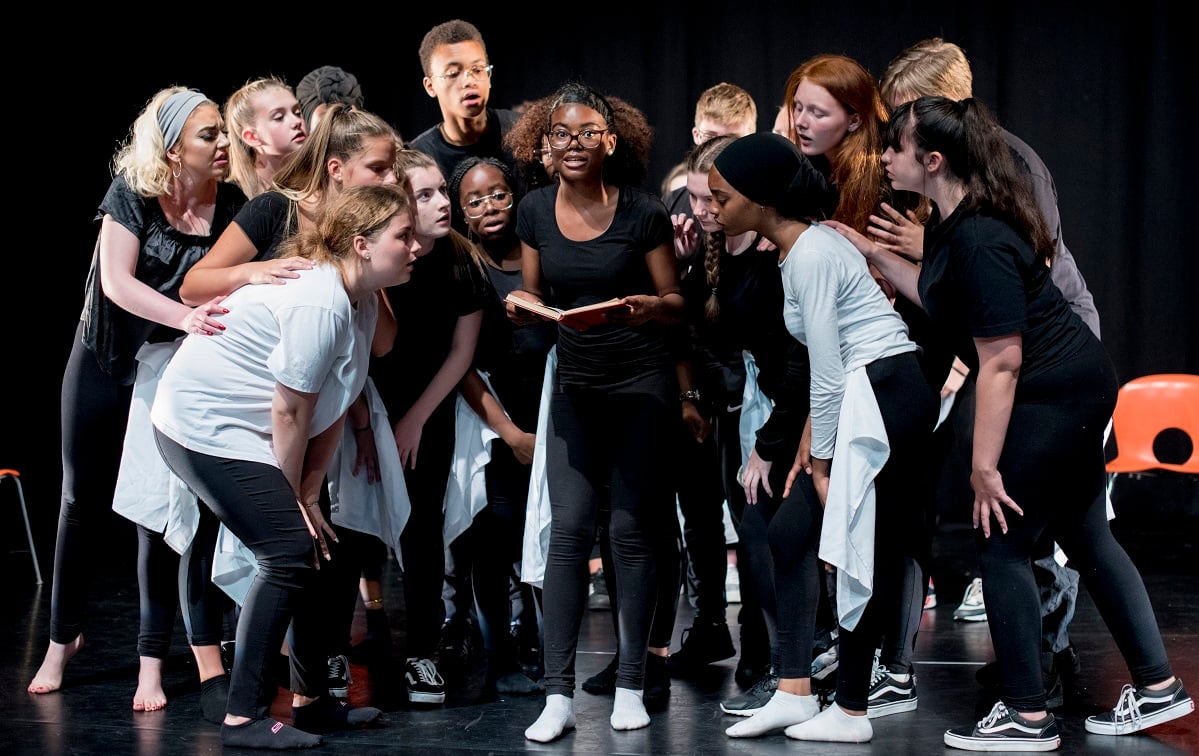
The learning revolution: how learning departments are driving cultural change
How can cultural spaces become spaces of learning? And how can learning spaces become cultural spaces? Jenny Mollica reflects on the experience of Barbican Guildhall Creative Learning as it reaches its tenth anniversary.
Ten years ago London’s Barbican and the Guildhall School of Music and Drama came together, united by a shared vision of what is possible when an international arts centre collaborates with a world leading conservatoire to shape and deliver new approaches to engagement with the arts.
Since then the work of Barbican Guildhall Creative Learning has grown and evolved in ways we wouldn’t have thought possible. We now work locally, nationally and internationally with people of all ages and backgrounds, delivering more than 40 programmes alongside 150 partners to more than 22,000 participants every year.
We work across the art forms – music, theatre, dance, visual arts, film and poetry – on wide-ranging programmes, activities and events designed to empower people to develop creative skills for life.
More often than not learning departments are now the engine rooms that drive and stimulate the big questions for cultural institutions
These include our free multi-sensory play offer for under-5s, Squish Space; our flagship schools programme Barbican Box, which has featured artists such as Complicité and Michael Rosen; our London training centre for the world’s first disabled-led youth orchestra, the National Open Youth Orchestra; our Community Views of Barbican exhibitions for local community groups and charities; and the annual Chronic Youth Film Festival curated entirely by our Young Programmers.
Often our participants think big cultural institutions aren’t for them, but Creative Learning offers a way in and the highlight of this work for me is witnessing the transformative impact it has on people’s lives. When asked to describe the programme in one word, one of our Young Poets, Kareem Parkins-Brown, chose ‘empowerment’.
Raising questions
There have been major changes over the past ten years, including a significant change in understanding of what learning is when it truly takes root and breathes life into a cultural institution. The big shifting point has been a movement away from the frequent perception of learning and education as ‘adding value’, towards a more intentional embracing of its place at the very heart of an organisation’s purpose.
More often than not learning departments are now the engine rooms that drive and stimulate the big questions for cultural institutions. Questions such as: Who gets to make and produce culture? Who gets to decide what and who cultural space is for? And who gets to decide what culture is anyway? By the sheer nature of our work – operating across sectors, communities and spaces – it is both our role and duty to lift the lid on these big, sometimes uncomfortable, questions.
Certainly our work in partnership with teachers, young people, artists and community organisations has taught us much along the way. Today, these partnerships inform how we work at every stage and provide the conditions for genuine exchange, co-creation and two-way learning. When they are working at their best – as for example, our award-winning three-year partnership with The Garden School in Hackney, a specialist school for learners with autism, they move on our own practice in some way too.
Future solutions
In many ways we are settling into our next decade with a greater level of confidence and purpose. We know that there is – and will continue to be – global demand for creative people in the workplace, and yet arts learning in schools is on the decline: a Fabian Society report shows that two thirds (68%) of primary school teachers in England say there is less arts education being taught now than in 2010, and half (49%) say the quality of that education has got worse.
Clearly there is no silver bullet or simple solution, and as a department we are thinking about the types of partnerships and delivery models that will most powerfully amplify our impact over the next ten years.
But if I were to answer this question more abstractly, I find myself going back to the start. When we think about what forms the very basis of our DNA as a joint division of the Barbican and the Guildhall School, we find ourselves uniquely placed to ask: How can cultural spaces becomes spaces of learning? And how can learning spaces become cultural spaces? And does the future solution for our sectors emerge somewhere from the meeting point between the two?
I remain enormously passionate about that point of intersection between cultural and educational space – a meeting point in which we see most acutely the possibility and opportunity for change, agency and cultural democracy. That space in-between is intrinsic to us. It’s where we have come from – and it’s fundamental to where we are going – and it’s where we really get to ask the big questions.
Jenny Mollica is Director of Barbican Guildhall Creative Learning.
Find out more about Barbican Guildhall Creative Learning programmes at barbican.org.uk/take-part
Join the Discussion
You must be logged in to post a comment.